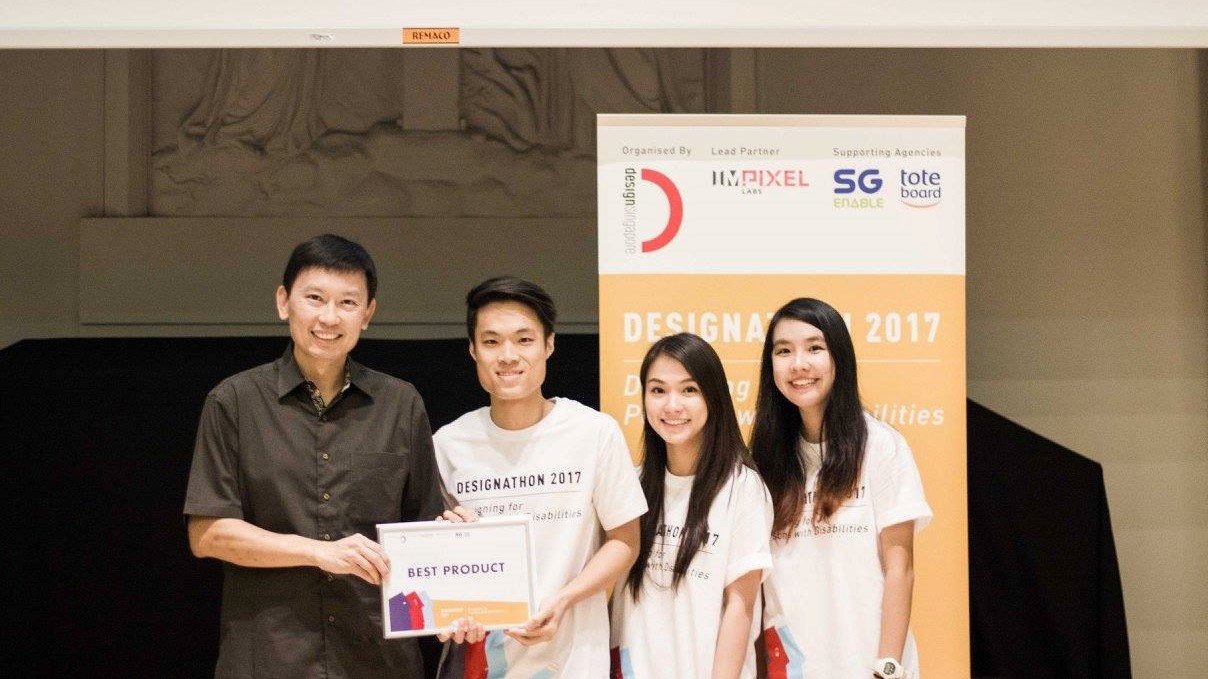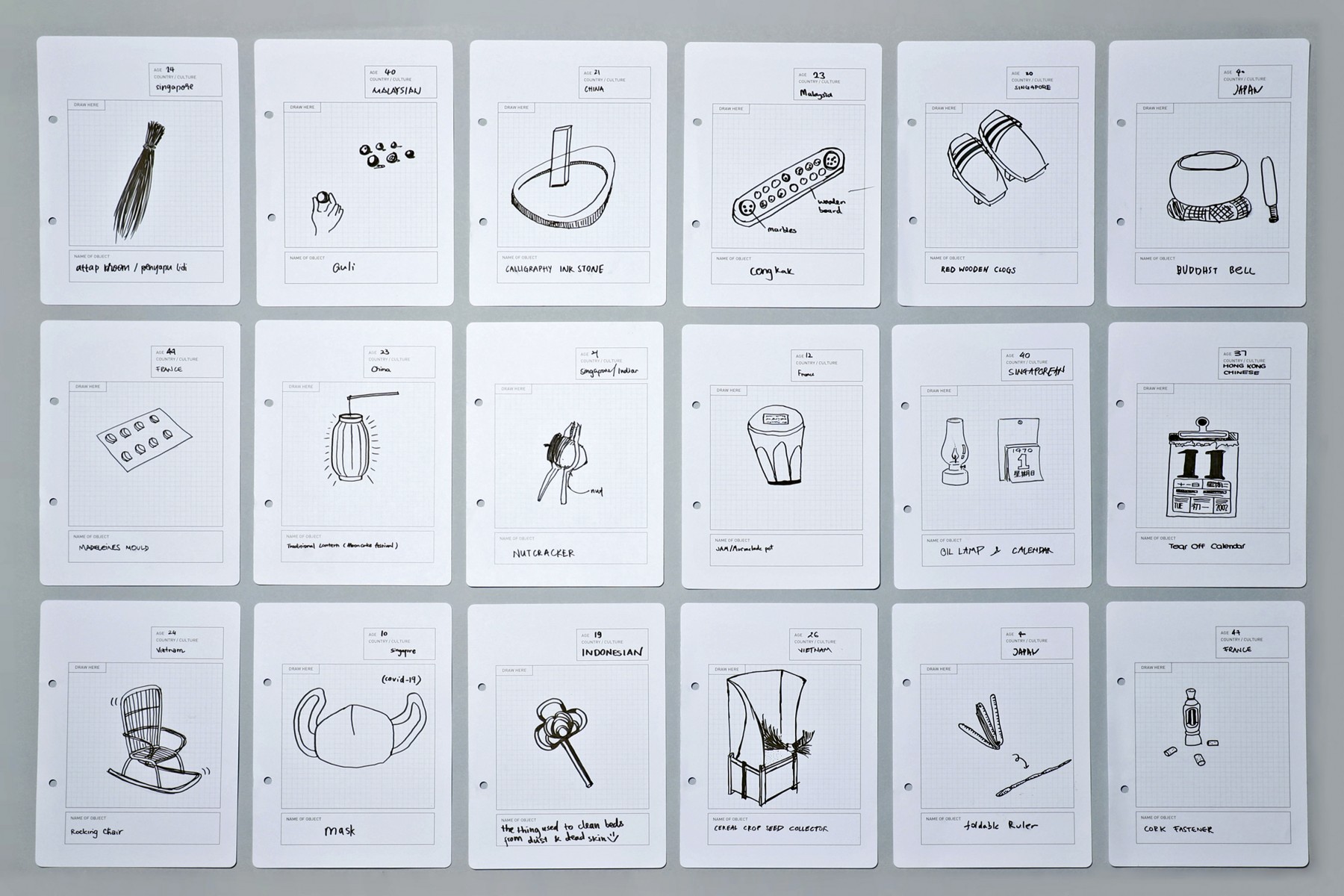Designing a better way to deal with dementia
For NUS Division of Industrial Design (DID) alumna Ms Poh Yun Ru, dementia is a topic that hits home as her grandmother has been diagnosed with the condition.
“I could not comprehend the nature of her actions. Sometimes, it just seems as though she acts out of the ordinary to get our attention, and at other times, there were no warnings for her sudden emotional breakdowns,” recalled Ms Poh, who is currently a designer at the NUS Design Incubation Centre and a teaching assistant at the NUS School of Design and Environment.
When her grandmother’s condition came to light, Ms Poh wanted to help her. Then an undergraduate in her final year at DID, she decided to work on designing a memory stimulation tool for the elderly suffering from dementia for her Final Year Thesis. She named it Rewind.
Designed in collaboration with Thye Hua Kwan Nursing Home, Rewind uses multi-sensory stimulation to prompt meaningful recollection from seniors suffering from dementia. It aims to trigger their procedural memory of actions such as spreading jam, ironing clothes, and so on. This triggering unearths personal memories, such as of spreading kaya for breakfast, often resulting in conversations of said memory.
Watch Ms Poh’s Rewind in action and find out how her grandmother reacted to using Rewind for the first time.
Embracing social design
For Ms Poh, design is a means to develop intuitive and inclusive solutions for people from all walks of life. She shared, “Designing Rewind was a precious opportunity, not just to help my own grandmother, but to delve deeper into understanding dementia patients better and hopefully improve their lives, even if it was by just a little.”
When did she become more socially engaged? She credits one memorable DID project with piquing her interest in social design - a project with special education school Rainbow Centre. This project was offered as part of DID’s Design Platforms programme, where students get to tackle both conceptual and real-life projects with industry collaborators.
At Rainbow Centre, she joined classmates Mr Alvin Low and Ms Ng Zi Ning to design Figo, a sports system to help children with disabilities integrate into society by enabling them to play sports. The team ensured that Figo can adapt to the users’ needs, whether they are wheelchair-bound, visually handicapped, or living with multiple disabilities such as cerebral palsy and hypotonia.
The team’s pragmatic, empathic and inclusive design won Best Product at the “Designathon 2017: Designing for Persons with Disabilities” competition.
Such experiences have helped shape Ms Poh as a social designer and inspired her in the development of Rewind.
Calibrating Rewind
“In designing for a more niche and specific target audience, great importance has been placed in co-development, such as working closely with doctors and patients,” shared Ms Poh.
But there is another aspect of Rewind that needs careful calibration – the procedural memory that Rewind taps on to trigger personal memories varies from generation to generation. Turning the rotary dial of a telephone has been supplanted by push-button dialling, which in turn has given way to the modern touchscreens of Apple iPhones and Android devices.
At the DesignSingapore Council’s Visions of the Future exhibition (10 Dec 2020 – 7 Jan 2021), Rewind was selected as one of the seven exhibited designs, presented online and at the National Design Centre. Immediately seizing the opportunity, Ms Poh set up a feedback system at her Rewind exhibit, encouraging visitors to submit sketches of objects that they fondly remember using with their parents or grandparents.
“Visions of the Future enabled my project to be exposed to a wider audience, from whom I managed to collect a large amount of data,” said Ms Poh. “With the submissions from this exhibition alone, new gestures and interactions can already be integrated in Rewind, helping it cater to a wider population, potentially improving the lives of people with dementia and their families.”
The future of Rewind
With the support of the NUS Design Incubation Centre, Ms Poh continues to develop Rewind. She has begun collaborating with a major local healthcare organisation to conduct large-scale feasibility studies.
“I hope that through my design, more people can see how easily they can connect and contribute to improve the lives of others around them.”
Understanding dementia Dementia is a general term for progressive mental decline which leads to increasing difficulties in coping with everyday activities. This could mean failing memory, deterioration of intellectual function and personality changes. The most common type of dementia is Alzheimer’s disease. According to the World Health Organisation, around 55 million people have dementia worldwide. The number is expected to rise to 78 million in 2030 as the global population ages. The total global societal cost of dementia was US$1.3 trillion in 2019 and this is expected to surpass US$2.8 trillion by 2030. In Singapore, the number of people with dementia is about one in 10 seniors aged 60 and above, or 86,000 people; and by 2030 it could be about 130,000 seniors. The month of September marks World Alzheimer’s Month. More resources have been launched in Singapore to support dementia patients and caregivers. These include:
|







